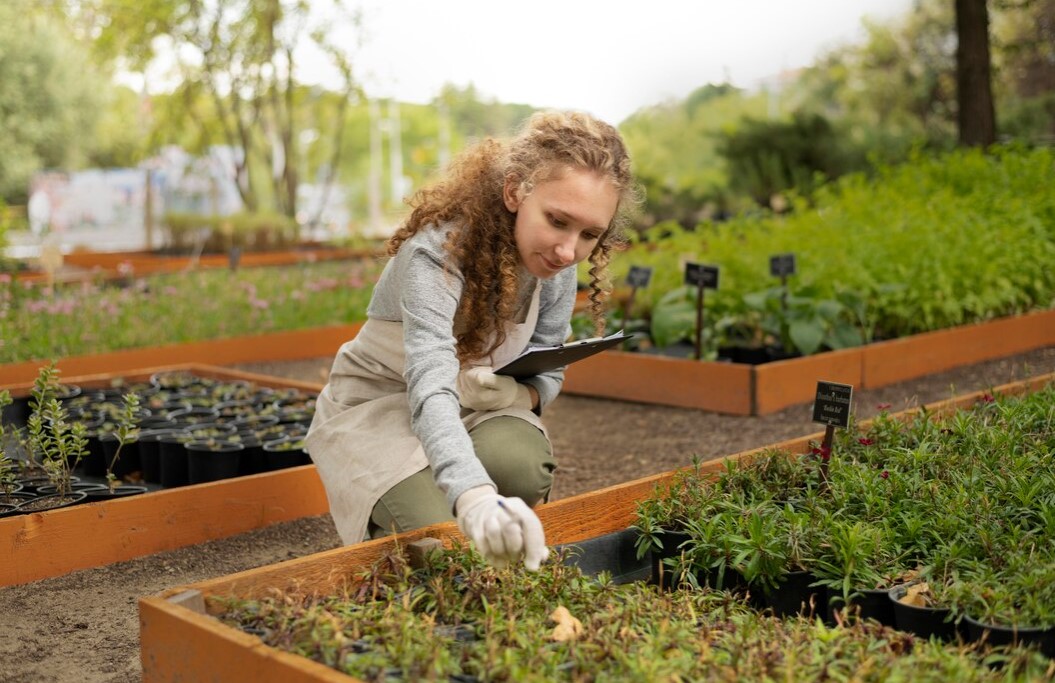Vegetable gardening on a slope is a fascinating endeavor that not only brings forth a bountiful harvest but also transforms an otherwise challenging terrain into a vibrant, green oasis. Whether you’re dealing with a gently sloping hillside or a steeper incline, the rewards of slope gardening are plenty. In this article, we’ll explore the ins and outs of cultivating your own vegetable haven on sloped ground.
Introduction
Definition of Vegetable Gardening on a Slope
Vegetable gardening on a slope involves cultivating plants on inclined ground, presenting unique challenges and opportunities for gardeners. Unlike traditional flat gardens, slope gardening requires thoughtful planning and creative solutions to address issues like soil erosion and water runoff.
Benefits of Gardening on a Slope
Embracing slope gardening comes with a host of benefits, including efficient use of space, improved sunlight exposure, and enhanced visual appeal. Additionally, gardening on a slope can promote better soil drainage, fostering healthier plant growth.
Choosing the Right Slope
Evaluating the Slope Gradient
Before diving into slope gardening, assess the gradient of your slope. A gentle slope is ideal for beginners, while experienced gardeners might tackle steeper inclines. Understanding the slope’s gradient is crucial for effective planning and terrace construction.
Sunlight Exposure Considerations
Take note of how sunlight interacts with your slope throughout the day. Proper sunlight exposure is vital for plant growth. Consider the orientation of the slope and the potential shadows cast by nearby structures or trees.
Soil Drainage Analysis
Slope gardening demands excellent soil drainage to prevent waterlogging. Conduct a soil drainage analysis to identify any issues and amend the soil accordingly. Well-draining soil is a key factor in successful slope gardening.
Essential Tools and Materials
Terracing Equipment
Terracing is a fundamental technique for slope gardening. Acquire the necessary tools, such as retaining wall blocks, to create terraces that help control soil erosion and provide level planting surfaces.
Soil Amendments
Prepare the soil by incorporating organic matter, compost, and other soil amendments. These additions enhance soil fertility and structure, ensuring optimal conditions for plant growth on a slope.
Plant Selection for Slope Gardening
Choose vegetables that thrive in sloped environments. Consider factors like root depth, water requirements, and adaptability to slope conditions. Opt for a mix of vegetables to create a diverse and visually appealing garden.
Building Terraces
Step-by-step Guide to Terrace Construction
Terrace construction is a pivotal step in slope gardening. Follow a step-by-step guide to build sturdy terraces that minimize soil erosion and provide a stable foundation for your plants.
Tips for Preventing Soil Erosion
Implement erosion prevention strategies, such as installing erosion control blankets and incorporating ground cover plants. These measures safeguard against soil erosion, preserving the integrity of your slope garden.
Incorporating Retaining Walls for Stability
Retaining walls add structural stability to your slope garden. Learn how to build and incorporate retaining walls effectively, preventing soil movement and ensuring the longevity of your gardening efforts.
Selecting Plants for Slope Gardening
Best Vegetables for Sloped Gardens
Certain vegetables thrive in slope conditions. Explore a variety of options, including cascading tomatoes, hardy root vegetables, and resilient herbs. Selecting the right plants is essential for a successful and fruitful slope garden.
Companion Planting Strategies
Embrace companion planting to maximize the benefits of slope gardening. Pairing compatible plants can enhance nutrient uptake, deter pests, and create a harmonious ecosystem on your slope.
Addressing Challenges like Water Runoff
Effectively manage water runoff by incorporating features like swales and strategically placed rocks. Addressing challenges related to water distribution ensures that your plants receive the moisture they need for optimal growth.
Maintenance Tips
Watering Techniques
Implementing proper watering techniques is crucial for slope gardening. Learn how to water efficiently, considering the unique needs of plants on a slope. Avoid water runoff while ensuring adequate hydration for your vegetables.
Controlling Weeds on a Slope
Weed control is essential for maintaining a healthy slope garden. Explore organic weed control methods to keep unwanted plants at bay without harming your vegetables. Vigilance and proactive measures are key.
Preventing Erosion Through Proper Maintenance
Regular maintenance is essential for preventing erosion and preserving the beauty of your slope garden. Stay proactive with erosion control measures and address issues promptly to sustain the long-term health of your garden.
Addressing Common Issues
Soil Erosion Management
Develop strategies to manage soil erosion effectively. From ground covers to erosion control blankets, explore options that suit your slope garden’s specific needs.
Dealing with Uneven Water Distribution
Uneven water distribution can impact plant health. Troubleshoot and address issues related to water distribution, ensuring that each terrace receives the right amount of moisture.
Solutions for Poor Soil Fertility
Address soil fertility issues promptly. Explore natural and sustainable solutions, such as composting and organic fertilizers, to enrich the soil and promote healthy plant growth.
Creative Design Ideas
Ornamental Elements for Aesthetic Appeal
Enhance the visual appeal of your slope garden with ornamental elements. Incorporate decorative plants, sculptures, or creative pathways to add a touch of beauty to your vegetable haven.
Incorporating Pathways and Seating Areas
Make your slope garden more accessible and enjoyable by designing pathways and seating areas. Strategic placement of pathways ensures easy navigation, while seating areas provide a cozy spot to admire your garden.
Balancing Functionality and Beauty
Achieve a harmonious balance between functionality and beauty in your slope garden. Thoughtfully design the layout to optimize space and create an aesthetically pleasing environment.
Sustainability in Slope Gardening
Eco-friendly Practices
Promote sustainability in slope gardening by adopting eco-friendly practices. Explore water conservation methods, organic gardening techniques, and other environmentally conscious approaches and know about How to Amend Clay Soil for Vegetable Gardening.
Composting on a Slope
Integrate composting into your slope gardening routine. Compost not only enriches the soil but also reduces waste. Learn how to compost effectively on a slope for a greener, more sustainable garden.
Encouraging Biodiversity
Foster biodiversity in your slope garden by incorporating a variety of plants. Diverse plantings attract beneficial insects, promote pollination, and create a resilient ecosystem on your slope.
Success Stories
Showcasing Successful Slope Gardening Projects
Explore real-life success stories of slope gardening enthusiasts. Learn from their experiences, challenges, and triumphs to inspire and guide your own slope gardening journey.
Learning from Challenges and Triumphs
Every slope gardening project comes with its set of challenges and triumphs. Embrace the learning process, adapt to unforeseen issues, and celebrate the successes along the way.
Benefits of Vegetable Gardening on a Slope
Environmental Advantages
Vegetable gardening on a slope contributes to environmental sustainability by preventing soil erosion, promoting biodiversity, and utilizing space efficiently.
Health and Well-being Benefits
Engaging in slope gardening provides physical exercise, mental relaxation, and the satisfaction of growing your own food, contributing to overall health and well-being.
Economic Aspects of Slope Gardening
Slope gardening can be a cost-effective way to produce fresh, organic vegetables at home, potentially saving money on grocery bills and promoting self-sufficiency.
Conclusion
Embarking on the journey of vegetable gardening on a slope opens up a world of possibilities. With careful planning, the right tools, and a bit of creativity, you can transform an inclined space into a thriving vegetable paradise. Embrace the challenges, celebrate the successes, and enjoy the unique rewards of slope gardening.
FAQs
- Can I start slope gardening as a beginner?
- Absolutely! Start with a gentle slope, follow the guidelines, and learn as you go.
- How do I prevent erosion on my slope garden?
- Use erosion control blankets, ground covers, and strategically placed retaining walls.
- What vegetables are best suited for slope gardening?
- Cascading tomatoes, root vegetables, and resilient herbs are excellent choices.
- Is slope gardening environmentally friendly?
- Yes, it helps prevent soil erosion, promotes biodiversity, and uses space efficiently.
- Can I incorporate ornamental elements in my slope garden?
- Certainly! Decorative plants, sculptures, and creative pathways add aesthetic appeal.





